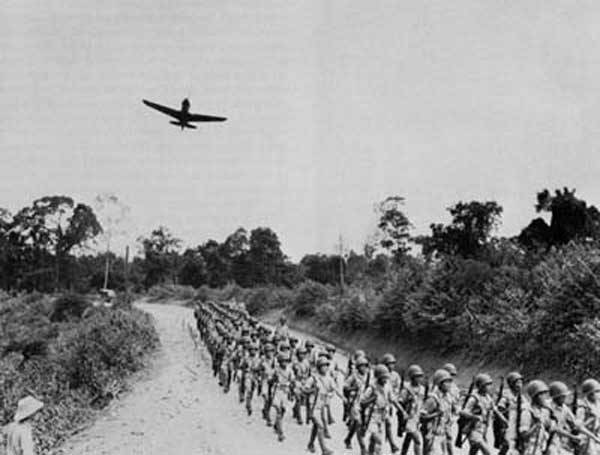To some, the India-China War, which started on October 20, 1962 with the Chinese Army walking across the contested and an undefined border, was not a war at all but an armed incursion across the mountains. Call it by any name, the event continues to rankle all and sundry in India; it should be but natural, therefore, for the leadership, military and civil, to analyse and study the happenings of that one fateful month of 1962, to prevent errors supposedly committed. But why is it that the errors, and errors had been made, are still considered as ‘perceived’ and the lessons learnt, if they have been learnt, never been placed in the public domain?
The Report, believed to be highly critical of India’s military and political leadership of the time, continues with the tag of “CLASSIFIED”…
If October 2012 was the 50th anniversary of the forgettable war, the Sino-Indian conflict, March 2014 was the centenary of the ‘birth’ of McMahon Line, which can be considered as the key attempt at defining and de-limiting the India-China border in the Eastern sector, and probably the genesis of the conflict. China’s response to the McMahon Line and its application to demarcate the India-China border has been one of outright rejection on grounds of ‘imperialist legacy’. Whether China’s stand on the issue defensible or not can be a definite subject of debate and perhaps, of mutual accommodation. China’s persistence in claiming the entire present-day Arunachal Pradesh, however, can be an indication to staking a claim for a swap in the Western Sector.
China, all along, wanted a route to Tibet through Aksai Chin and could not be bothered about facts from history. China had been active in that area for a decade prior to 1962, but in 1953, Nehru decided to redraw the boundary as per the Johnson Line of 1865, which included Aksai Chin in India; this was contrary to the British stand of 1899, which had kept it out of India. The Chinese have continuously argued that the Ladakh border has never been clearly delineated and, if at all, any border demarcation has to be as per the McCartney-MacDonald Line, which favours China.
To some, the India-China War, which started on October 20, 1962, with the Chinese Army walking across the contested and an undefined border, was not a war at all but an armed incursion across the mountains. Call it by any name, the event continues to rankle all and sundry in India; it should be but natural, therefore, for the leadership, military and civil, to analyse and study the happenings of that one fateful month of 1962, to prevent errors supposedly committed. But why is it that the errors, and errors had been made, are still considered as ‘perceived’ and the lessons learnt, if they have been learnt, never been placed in the public domain?
For India, this War continues to remain a harrowing and embarrassing experience, memories of which cannot be erased…
What happened before the Chinese walked in, and during that fateful one month of 1962, has been hidden in a classified document in the ‘impenetrable’ South Block, in what is known as the Henderson Brooks Report (co-authored by Lt. Gen. Henderson Brooks and Brig. PS Bhagat). The Report, believed to be highly critical of India’s military and political leadership of the time, continues with the tag of “CLASSIFIED” citing national security interests, as was told by the Government in Parliament in February 2008 and subsequently too. Some years ago, Neville Maxwell, now a retired journalist settled in Australia, authored the controversial “India’s China War” (Jaico 1970), while stationed in India as a foreign correspondent. It is purportedly based on a summary of what he claimed to be the Henderson Brooks Report; a claim which can be verified only if the Government decides to de-classify it. In March 2014, Maxwell has gone a step ahead and placed the ‘CLASSIFIED’ Report on his webpage. The online ‘leak’ of the Henderson Report has brought about a predictable reaction from the Indian Government; it has moved to block access to the Report in an era of Wikileaks!
For India, this War continues to remain a harrowing and embarrassing experience, memories of which cannot be erased. The new COAS, General JN Chaudhuri, appointed in December 1962 on the resignation of General PN Thapar, tasked Lt. Gen. Henderson Brooks who was then the Corps Commander in Jalandhar, Punjab, to conduct a review of the Army’s reverses. Brig. PS Bhagat (later Lt. Gen.) assisted him. Brooks submitted his report in April 1963 and it was promptly classified as “TOP SECRET”, a classification that it continues to carry.
In the 50 plus years that have elapsed since the submission of the Report, much of it has become public knowledge through selective leaks, even though the Report itself has not been officially placed in the public domain. Based on the fragmented information, military officers and writers have come up with their versions of India’s defeat. It is speculated that Lt. Gen. Brooks, who migrated to Australia on his retirement, had shared the Report with Maxwell and, therefore, is held guilty of betrayal by those who wish to keep his account under wraps. Why is the Henderson Brooks Report such a bogey that it has been a taboo subject in New Delhi’s corridors of power?
Declassifying the Brooks Report will allow the military and political leadership to learn from the errors of the past…
The reaction of the Government only strengthens the belief of many that the content of the Report covers not just an operational review of the Army but much more. The Terms of Reference given to Lt Gen Brooks were to inquire into what went wrong with the training, equipment, physical fitness, the system of command and control and the military leadership. It was not to comment on the failures and lapses of the political leadership yet it presumably does provide some interesting insights on the political decision-making; or else, why would the Report be kept under wraps for 51 years! Most democracies de-classify secret documents after a reasonable period, of about 25 to 30 years, has elapsed. To maintain that a 51-year old report is of operational value is an indicator of mischief and political motivation.
To answer these questions, for the Report to be kept classified for all these years, one has to understand three main issues, political, institutional and national, and the main players therein. First, and the easiest to point a finger at, is Pandit Jawaharlal Nehru, India’s first Prime Minister. Notwithstanding Nehru’s remarkable achievements, both in the pre-Independence and post-Independence periods, the China issue is considered as his most conspicuous failure. To say that he was naive, insofar as China was concerned, would be incorrect. Nehru, at various points, spoke contradictorily of China yet somewhere he missed out to grasp the instrumentality of hard power in international relations, especially where China was concerned.
The ‘Forward Policy’, as was pushed by Nehru, has been labelled as ill-conceived. What was this policy? As per the directions of the Policy, Indian forces were instructed, from November 1961 onwards, to patrol and establish posts as far forward as possible from the existing positions, in a bid to arrest the aggressive border patrolling by the Chinese Army that had commenced a month earlier. From the writings of those who claim to have had access to the Henderson Report and other documents of that period, the Forward Policy was based on a flawed premise that, “the Chinese would not react to our establishing new posts and that they were not likely to use force, even if they were in a position to do so.” This flawed premise was driven by the then Director of the Intelligence Bureau, B N Mullick, who was close to Nehru and wielded immense power in all discussions; he is supposed to have pushed the Policy for implementation, even in the absence of military wherewithal. Apart from his failure to assess the Chinese preparations, he has also been criticised for providing incomplete and incorrect intelligence and to some extent, meddling in purely tactical matters of the Army.
The ‘Forward Policy’, as was pushed by Nehru, has been labelled as ill-conceived…
This gravely misplaced assumption was given credence by a complicit Army HQ, despite an earlier appreciation to the contrary. Nehru, too, accepted this analysis and concluded that Generals KM Cariappa and Thimayya, who had earlier advised to the contrary, were ‘colonial legacies’, influenced by Western thought processes, and thereby, were unduly unthinking when it came to an analysis of the Chinese thinking.
This leads to the second issue, that of an institutional disquiet, also revealed by the events of that period. An examination of the happenings of that time reveals a vertical divide in higher echelons of Army HQ. There were those who were always true to military traditions, followed professional thinking processes and proffered sound advice. There was also the group with political connections who spoke only what the political leadership wished to hear, even if it was against military appreciations based on sound thinking. Amongst the latter was Lt. Gen. BM Kaul, of whom it is reportedly said that he answered the question “After Nehru, who?” by pointing to himself! Lt. Gen. Kaul was the Chief of Staff at Army HQ in the months ahead of war and was later appointed as the first commander of the newly raised IV Corps at Tezpur. Distantly related to Nehru, he has been described as a good military bureaucrat but a poor battle commander but was a favourite of Krishna Menon, the Defence Minister.
Lt. Gen. Kaul, however, was not alone; he was part of a faction in the Army who spoke to the political leadership in the language that it wanted to hear, and who conspired with the civil counterparts to marginalise the true soldiers, at times bypassing the chain of command. This group of ‘yes-men’ ignored the advice of the field commanders to restrain the Forward Policy until the troops were augmented; both Ladakh and NEFA had a minimum requirement of 12,000 troops (an additional infantry division) each, to somewhat address the imbalance with China on the borders. The figure had been arrived at during war-games conducted earlier in 1960. The Army HQ disregarded all this and pushed for the Forward Policy, with ill-equipped and short-numbered formations on the border, as against ‘defence in depth’, an earlier policy propounded in 1960-1961 by General Thimayya, prior to his retirement. The forward probes continued and as many as 60 forward posts were established in the Ladakh sector by July 1962, thus stretching the already meagre resources; some of the forward posts had just 10 soldiers each! The story in NEFA too, in the Eastern sector, was no different where forces were thinly spread in small pickets.





